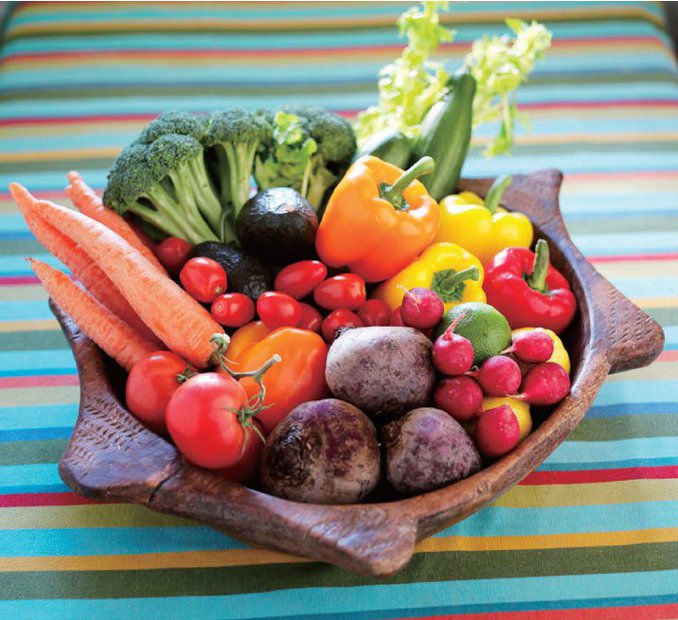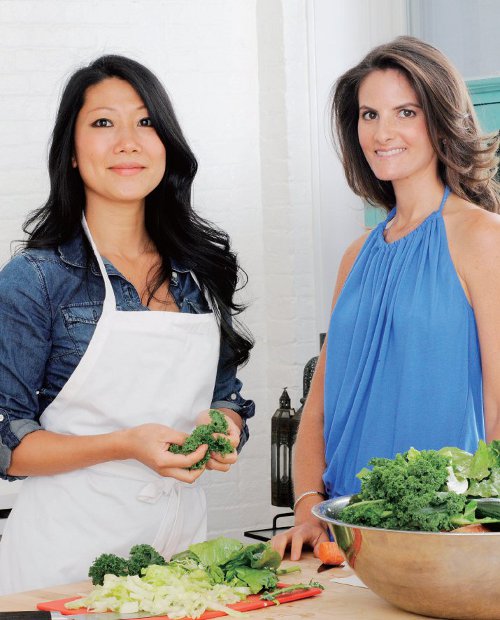
INTRODUCTION
Natalia Rose
This is much more than a cookbook. The recipes in the following pages will no doubt dazzle your taste buds, but they will also, we hope, revolutionize the way you think about food and food preparation. Why? Simply put, the twenty-first century is an exceptionally difficult time for human health. Amid the many medical, scientific, and technological “advances” of our age, we are finding ourselves more vulnerable to physical and chemical imbalances today than ever before. Doris Choi and I see this in our professional lives every day; clients keep coming to us for answers they can find nowhere else.
What we need, then, is a new health protocol that will serve us well now and into the future. That’s why Doris and I joined forces to create this book. We designed it specifically to help lift you up and out of the quagmire of toxicity that is all around and within us in the modern world and to restore you—through real, human food—to a state of balance, beauty, and vitality.
The rash of symptoms and illnesses we’re seeing—everything from weight gain, lethargy, and mood disorders to the most common killers, such as cancer and heart disease—is a warning call to us all. It’s the surest indication that the old health standbys of allopathic medicine and restrictive dietary labels such as “vegan,” “low-cholesterol,” “low-fat,” “sugar-free,” “all-raw,” and “gluten-free” are falling short of their promises. At a time when our environment and food supplies have become perilously denatured, what we need is to broaden our minds, reconnect with our roots, and redraw the dietary map.
For years, I have been studying the effects of the modern industrial paradigm on our environment, our food supplies, and the human body. And yet, as dire as the warning signs have become, I still have hope for the future.
In my lifelong search for balance within a deeply imbalanced world, I have identified, with the help of many brilliant minds, a way forward for health seekers—a way, in effect, to soar off the bow of this ill-fated Titanic.
THE ROOTS OF HUMAN HEALTH
Let’s revisit our origins for a moment. For millions of years of human evolution, our environment somehow maintained an ideal alkaline pH balance. But with the growing influence of industry on our lives, our pH has become increasingly acidic, and this is threatening the critical balance of all life on our planet. The elements outside our bodies (air, water, soil) and within our bodies (our cells, blood, tissues) are dipping to acidic levels that do not support human health.
Countless symptoms, diseases, and disorders are challenging medical researchers, baffling doctors, and panicking their victims—and, quite frankly, sending many said victims to innovative health practitioners like me. Honest health seekers (and I’m pleased to note, our ranks are growing every day) are losing faith in purely Western allopathic approaches to health and are discovering a whole new frontier of knowledge.
Fundamental to the detox lifestyle is the recognition that our world is one great, interconnected, living, breathing organism, and every individuated organism within it is integrally connected to and affected by the whole. When we adopt this holistic perspective, we appreciate that what is true for the macrocosm is also true for the microcosm, and vice versa. Simplified by the ancient hermetic text, we have the maxim, “As above; so below.”
In direct opposition to this paradigm, we have our Western culture’s separation model, in which elements are categorized hierarchically, according to their culturally determined values. Under this system, nonliving things, such as industries and products, are often valued more than living organisms, such as ecosystems and basic human health. The development of industry and commerce at the cost of life has crippled humankind, without exception to one’s place in the social hierarchy. (Sure, the financial elite may appear to escape while the masses suffer—after all, the rich can afford all the quality foods, medicines, and treatments they need, right? Well, I can tell you from firsthand observation that they are just as physically ravaged by our mainstream diet as anyone else, because they are subject to the same laws of nature.)
There is a price to be paid for snipping away at the web of life. Just as the land, air, water, and myriad life forms that make up our world are weakening and mutating under the onslaught of toxicity, we humans—down to the very fiber of our beings—are weakening and mutating in equal measure. Is it any wonder, then, that our bodies and minds are sluggish, devitalized, and overweight? When we fuel our days with sugar, caffeine, and all manner of genetically modified and chemically processed foods (let alone large quantities of drugs and alcohol), how are our bodies supposed to respond?
Just like the soil of industrial agriculture, our internal physical terrain has been devastated with unfit, albeit culturally approved, “foods” and toxic substances. Consider the genetically modified grains, pasteurized milk and dairy products, factory-farmed meats, antibiotics, hormones, and other chemicals and medications that overrun the typical Western diet. As a result, our organs and tissues, just like the soil beneath our feet, are recycling toxicity and becoming rapidly devitalized.
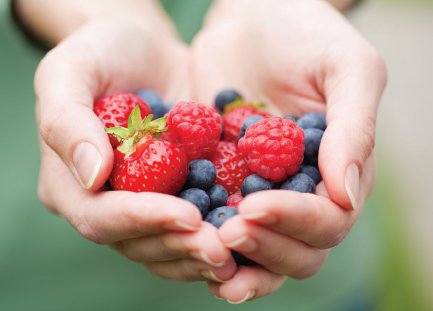
Just prior to his death in 2009, I had the distinct honor of interviewing renowned agricultural biologist Dr. Bruce Tanio, who kindly walked me through the reasons pesticides and chemical fertilizers were originally developed and used. In brief, with industrial agriculture came the tractor and synthetic fertilizers, which promised to reduce the output of time and energy, and the need for horses, and increase crop yield for farmers. While such productivity was very alluring, the widespread integration of these agricultural technologies destroyed the ideal nutritional balance in the soil—great for productivity, tragic for the body and the ecosystem.
Nutritionally balanced soil, Dr. Tanio explained to me, would remain rich with humus and naturally keep those decomposer pests in check indefinitely. Pests occur naturally in healthy soil, but the ratio of destructive microbes to productive ones rests heavily in favor of the latter. But pesticides and synthetic fertilizers disrupted this crucial balance. The good microbes were killed off with the bad, and the soil became weak and increasingly dependent on chemical intervention. That’s how pesticides became an accepted agricultural norm.
The same thing has been happening to our bodies. The microbial balance of fertile soil is similar to that of a healthy human intestine, which by definition must not exceed a ratio of 15 percent bad bacteria to 85 percent good bacteria. Just as unadulterated soil has no need for pesticides, the unadulterated human body has no need for antibiotics. It’s only when unfavorable microbes, or harmful bacteria, are provided an environment in which to thrive and overtake their productive counterparts that we get ourselves into trouble. Combine a weakening army of good bacteria with high acidity and an accumulation of old waste matter, and we’ve got ourselves an ugly situation.
It’s not enough simply to cut down on one type of food or another. Food industry behemoths are producing crops that actually handicap the human body. That’s right, even toxic fruits and vegetables! Chemically and energetically, the crops from manipulated seeds send incoherent signals throughout the body and trigger mutations in the cells. That’s why it’s important to opt for local green markets and trusted organic sources whenever possible.
ENERGETIC DESIGN
All of the ancient healing traditions agree that our organs, cells, tissues, and blood rely on the quality and quantity of a universal life force energy. The Chinese referred to this energy as chi, the basis of all ancient Chinese medicine. The Hindus named it prana, the centerpiece of Ayurveda, a system of traditional medicine native to India. Ancient Greek medicine called it pneuma and understood it to be the essential component of vitality. Whether or not you believe in any of these ancient traditions, there is no question that the physical makeup of a human being is a reflection of energetic design.
As we all learned in biology, we are a complex of interdependent systems—respiratory, circulatory, digestive, endocrine, immune, lymphatic, nervous, skeletal, and musculatory. For the purposes of the detox diet, however, it’s helpful to think of these systems in terms of electromagnetic energy. As I described in a previous book, Raw Food Life Force Energy, all organisms are made up of what I call living light energy—derived either directly or indirectly from sunlight. Therefore, in essence, all of the body’s systems rely on pathways whose job is to conduct fresh, clean energy (in the form of water, oxygen, and nutrients absorbed from sun-fed foods) continually to every organ and every cell.
Sadly, understanding the human body in terms of energetic systems and cellular health has been left out of our culture’s health conversation. Due to a sticky, acidic mainstream diet that routinely clogs the body’s internal pathways with toxic residues, most people today, whether they know it or not, are starving their cells of this vital energy. Thus, while there is much wisdom in the Hippocratic adage “Let food be your medicine and medicine be your food,” we must remember that much of our food has become just as denatured as we have and that the body can only thrive on a diet of clean, living foods.
The good news is that we can begin to reverse the damage to our cells—right here, right now. Gently guiding people back to a state of physical and energetic balance with cleansing foods is really what Doris and I do best. But navigating ourselves out of this catch-22 requires a specific method that I will outline very clearly for you in the coming pages. Doris’s recipes then make it easy for you to implement the principles of the detox diet and start reaping its benefits immediately.
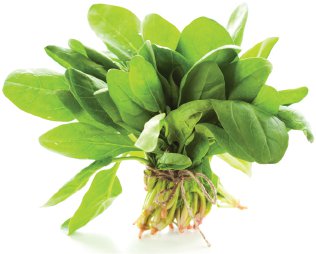
If you already practice the detox lifestyle and are familiar with my previous books, The Raw Food Detox Diet, Raw Food Life Force Energy, and Detox 4 Women, feel free to skip straight to the recipes. If not, I urge you to read through the dietary principles and tips that we provide in the first two parts of the book. Of course, the recipes in the third part bring all of these principles to life in the kitchen for you, so even if you decide to fly blind, you’ll be winging your way to a cleaner, slimmer, healthier, more energized you.
ABOUT CHEF DORIS CHOI
Enter Doris Choi, engineer of a whole new generation of food preparation. This book was really born when I met Doris in 2008. She was a traditionally trained personal chef with a history of successful catering companies in Manhattan. But once she discovered the power of living foods and the benefits of proper food combining, she couldn’t go back to her old-school techniques.
A consummate artist and innovator with a highly discerning palate, Doris began questioning the raw food fare she was discovering in the marketplace and coming up with far tastier, more vital, easy-to-digest recipes. She shared her discoveries with me, and I was blown away. That began our joint venture with our national delivery service, Detox Delivers. But Doris never stopped innovating, and today her recipes are better than ever.
Doris took all of the key principles that I have deemed critical to supporting cellular cleansing—including the particularly tricky ones, such as eradicating yeast in the body and omitting the density of nuts and seeds—and made masterpieces out of every single dish, sauce, and beverage.
For the last several years, Doris has been providing her extraordinary meals to our clients all over the country. Now, for the first time, she has compiled nearly two hundred of her best recipes for you, so you may easily whip them up in your own kitchen. No more guesswork, just the simple joy of food. (I say “simple,” because simplicity is one of the best features of these recipes. Note the short lists of easy-to-find ingredients and easy-to-follow instructions for light, clean, quick-exit creations that will reenergize your whole body.)
Doris innovates as naturally as she breathes. So for her to take all the dietary principles required for the ideal human diet in the modern age and translate them into the most delightful, gastronomically satisfying recipes was as natural as, say, Leonardo da Vinci picking up his pencil to sketch the Vitruvian Man, or Michael Jordan picking up a basketball. It’s one of her gifts, and it’s a gift to us all.
THE FUTURE OF FOOD
Doris and I opened our doors to The Rose Program Culinary Institute in 2009 because we wanted to share our insights about what we were calling the “future of food.” We did not want to delay. Health seekers needed the information, and they needed to know how to adapt the information in the kitchen so it could really work as a diet-lifestyle makeover.
Most of our clients come to the detox diet because they are struggling with their weight or experiencing physical symptoms that no other diet has ever successfully addressed. What they find is a whole new understanding of the underlying forces (for example, obstruction, waste retention, acidity, yeasts, environmental estrogens, and radiation) that are creating these imbalances in the body and how to reverse them through dietary intervention.
Like our clients, you will learn that your body is a brilliant organism that’s designed for continual self-cleansing and self-healing. It just needs your help in creating the best environment for the cleansing and healing to begin. Sure, we can dissect the body, study all its component parts, and pull out the manual of scientific terms, but if we do not grasp the principle of energetic flow and conductivity—indeed, if we do not connect the dots—we will forever be working at odds with our bodies.
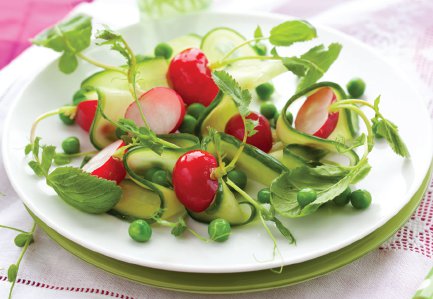
Contrary to popular belief, health does not come primarily from the daily intake of a certain number of nutrients and superfoods, but rather from aiding the continual removal of obstructions from the body’s pathways so that it can better absorb and conduct vital nutrients. Health comes when we clear the way for life force energy to flow harmoniously throughout all the body’s systems—continually reconnecting, oxygenating, and nourishing every cell. Ever wonder where detox dieters get that wonderful glow? Well, now you know.
But let’s get back to the culinary classroom with Doris: In our experience, most of our students’ imbalances (excess weight, cellulite, premature aging, irritable bowel syndrome (IBS), acid reflux, acne, allergies, autoimmune diseases, female reproductive problems, cancers, headaches, chronic fatigue, stress, and insomnia are among the most common issues that we see) almost always come from addictions to certain foods and substances. Growing up on a mainstream diet of chemically processed foods, sweets, meats, and poor food combinations wires us to crave certain tastes and textures. By the time we are adults, our whole physiology is a reflection of those misguided dietary choices. The addictions are system wide, and rewiring our brains and our bodies to accept a cleaner diet can be very challenging. Often, despite all the health information in the world, people cannot make the necessary changes because the tastes and textures of the old favorite foods keep luring them back.
As anyone from Alcoholics Anonymous will tell you, the first step to healing is to acknowledge there is an addiction in the first place. In our culinary school, we shine a light on these addictions (both obvious and not so obvious), how they were established, and how to overcome them by transitioning to a cleaner, emotionally satisfying diet. We always aim to fully empower our students—to make them indomitable in the face of their old dietetic demons—and now we offer the same to you.
Whether you are merely looking to lose weight and “get the glow” from good, clean food or have more ambitious, long-term health goals, you’ve come to the right place. Anyone on a mainstream Western diet is an addict of one sort or another. So familiarize yourself with our detox principles (see “Eight Essential Properties of Cleansing Foods,” page 17) and try a few of the recipes that sound most appealing to you. Then notice how your palate awakens to the vibrant flavors of real, living foods and how your previously overburdened body gradually comes back to life.
Before long, you will discover that you have no use for most of the products that the big food industry would have you shelling out good money for, day after day, for the rest of your life. All you need to liberate yourself from the old toxic food traps is an abundance of fresh, unadulterated vegetables and fruits, herbs and spices, the occasional piece of fresh fish (if you so desire), and a few tricks of our culinary trade. This is the future of food.
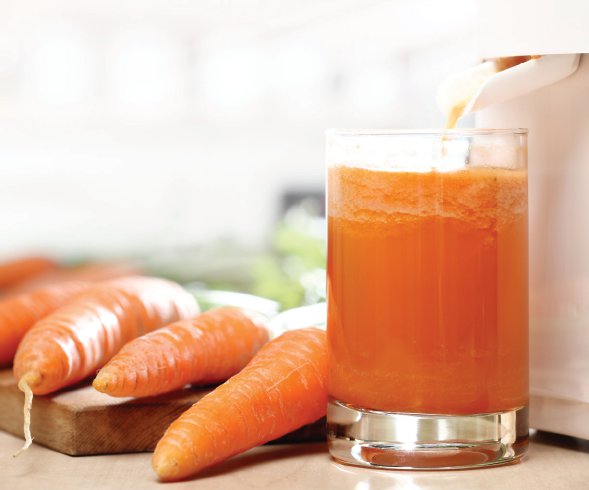
THE SKINNY
If, like many people, you are drawn to books on cleansing because of the weight loss benefits, I can assure you, weight loss is on the menu. You will lose all your excess weight when you eat this way. But what good is a skinny bod if you’re sick or if you feel lethargic or depressed?
One of the best parts of my job is watching people transform beyond what they thought possible as a result of the detox lifestyle—physically, mentally, emotionally, and spiritually. Most people have no idea how good and energized they can feel, how clear their head and heart can be, and how great they can look once they remove the internal blockages of waste, carbonic gas, yeast, rogue bacteria, and other toxins. While many forward-thinking people are working hard to save our planet’s ecosystems, Doris and I are here to help you save your own. So, by all means, enjoy the weight loss and beauty benefits—after all, losing excess weight is all part of rebalancing the body.
We are so excited to share this knowledge with you. It is our sincerest wish that with my guidance and Doris’s recipes you will experience ever-greater states of health and joy. But remember, you don’t have to memorize everything or take it in all at once. You can jump straight ahead to the glorious recipes right now. If, however, you are the inquisitive type who wants to grasp why these recipes are designed exactly as they are, you will find that information in the coming pages.
Doris Choi
Three years ago I came across Natalia’s book, The Raw Food Detox Diet. Normally, I didn’t read books with the word diet or detox in their titles—and forget about “raw food,” whatever that was. It was out of character for me to pick up such a book, but I did, and I then spent the next hour sitting on the floor of the bookstore devouring it. And then I bought it.
I was excited and agitated at the same time. I had a strange feeling, almost like nostalgia or déjà vu; I’d never heard of food combining, cleansing, detoxing, or alkalinity before, but somehow the concepts came flooding back to me as if I had known them all along. It all made perfect sense. I was excited because I knew this knowledge was going to change me, but I was agitated because it had taken me so long to find it. In the past decade of working in the food service industry, I had never questioned the “health” of my food. I felt no obligation toward myself or my customers other than to cook foods that tasted great and earned compliments. So what if a recipe called for deep-frying and half a stick of butter? After all, classically trained chefs learn quickly that butter makes everything taste better. Cooking this way had altered my taste buds and desensitized them to fresh foods.
Although I wanted to start Natalia’s detox diet right away, as a personal chef it seemed unrealistic. I had always loved being a chef. Even fourteen-hour days in a 90-degree kitchen made me happy; at least I wasn’t stuck in an office with fluorescent lighting getting headaches just to bring home the bacon. But after ten years of cooking bacon, I was starting to feel just as bad. Meanwhile, America’s love affair with pork was still going strong. I had some great memories involving my deep fryer, but maybe enough was enough. I was turning forty. For the first time in my life, I was gaining weight, my cholesterol was going up, my skin was freaking out, and I was finding it hard to go to sleep and even harder to wake up. I was just plain tired. It didn’t help that everyone around me thought I was fine: “You’re just getting older, Doris. It happens to all of us.”
But I didn’t want to give up my trade. Cooking was fun, gritty, and instantly rewarding. I didn’t have to wait for the quarterly report to see how I was doing; I knew right away if I was good or not. As with most jobs, however, you are only as good as your last performance. So even after discovering Natalia’s book, I kept cooking four-course meals with chicken liver pâté, filet mignon smothered in Gorgonzola, and crème brûlée. But I was also drinking green juices, eating salads for lunch, and, eventually, food combining properly. Then I went on a three-day juice fast and got so sick it shocked me (a clear sign of how much further I still had to go on my detox journey), but I stayed the course and made it through like a champ.
A couple of months later, a cook caught me spitting out a lamb meatball that I had to make for a party and looked at me funny. That was all it took. I dissolved my catering company and called Natalia.
My mission was clear: I wanted to open a personal chef service where I wasn’t being a hypocrite and cooking foods that I would not eat myself. I also wanted others to benefit from Natalia’s principles because they had helped me tremendously; I had lost excess weight, my skin was clear, and my mind was less foggy.
I began by seeking out the guidance of all the raw food cookbooks I could find. These cookbooks introduced me to a whole new world of kitchen artillery, and, armed with my new “raw food” equipment—juicers, blenders, dehydrators, and other fun gadgets—I went to work. I followed the recipes diligently and fastidiously. I even embraced the “all raw” diet, momentarily setting aside Natalia’s emphasis on transitioning and incorporating some cooked foods in the detox diet.
But something was amiss. Preparing foods this way was laborious, the ingredients lists were a mile long, and forget about the “uncooking” time. It took me two days to sprout nuts that took another two days in the dehydrator to eat. Also, it wasn’t very good. I lamented that my taste buds would never adapt to cleansing foods. After all, it had taken me weeks to get used to drinking green juice without gagging. (I was die-hard back then; the greener the better, and forget the lemon!) I felt destined to spit out the food I was “uncooking.”
But I persevered. I showed up at Natalia’s door with a box of raw foods I had ordered from a local health food store. Although the food was unprocessed and raw, it was dense and unappetizing: The burgers were mainly nuts and seeds, the raw breads looked and tasted like corkboard, and the cookies were, well, not even a dunk in milk could save them—they were that dry. I was adamant: I did not want to cook or eat like this. And a funny thing happened: Natalia agreed. She proceeded to tell me what she ate every day. It was mainly fresh raw foods, unadulterated and simply prepared. She did not even own a dehydrator.
It was time to get back to basics.
Writers can tell you that the hardest part of writing is the editing. Using an economy of words to get a point across is difficult. As a chef, we suffer the same problem; we tend to overembellish, overdress, or overseason foods, all in the name of creativity. Learning that less is more was challenging, but as I turned more and more to fresh raw foods, it became a natural organic process, and the frills fell by the wayside. It soon seemed silly and superfluous to add or distract from the beauty of real foods. My recipes reflect that.
This cookbook documents my growth not only as a chef but also as a person. I have become less selfish, more compassionate, and more concerned for our environment. I am more sensitive to the degeneration of our food supply and the mistreatment of our soil. I like to believe my recipes will help to cultivate and sustain what we still have left of nature’s bounty and not further damage an already fragile ecosystem. And I trust that honoring our own internal ecosystems by eating mainly fresh plant-based foods is one of the best ways to honor the planet.
It’s time to get back into the kitchen and start making a difference.
